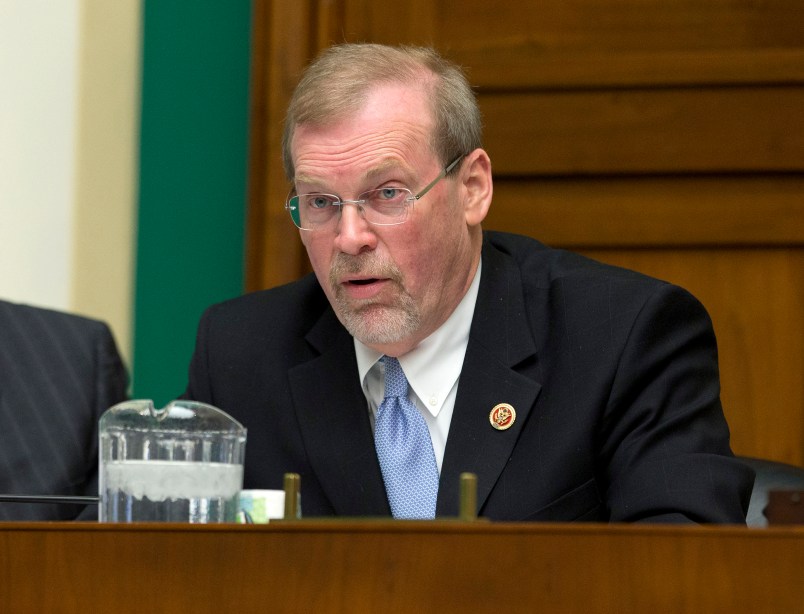Lost in the public outcry over an ultimately failed proposal to gut the independent Office of Congressional Ethics, House Republicans this week approved the reinstatement of an esoteric rule that could have a deeply chilling effect on the federal workforce.
The Holman Rule, passed Tuesday as part of the broader rules package for the 115th Congress, allows individual lawmakers to propose amendments to appropriations bills that request the termination of any government program or the reduction of the annual salary of individual federal employees to as low as $1.
A majority of the House and Senate would still need to approve any such amendment, but the lawmaker behind the resuscitation of the arcane rule said he fully expects it to be put to use.
Rep. H. Morgan Griffith (R-VA), a member of the House Freedom Caucus, told the Washington Post that he brought the Holman Rule back out of disapproval for an $80 million federal program devoted to caring for wild horses on federal land in the western United States. He said he wants to see the rule applied strategically to slash funding for that type of program, which he deems wasteful, but also acknowledged that lawmakers now have the “power” to cut large swaths of the federal workforce if they so choose.
“But isn’t that appropriate?” Griffith asked the Post. “Who runs this country, the people of the United States or the people on the people’s payroll?”
Critics of the rule’s revival, including Democrats and unions representing federal employees, fear that it gives rank-and-file member of Congress broad leeway to go after specific programs or individuals that he or she dislikes. That concern is heightened by the Donald Trump transition team’s recent request for the names of Energy Department scientists working on climate change policy. While transition officials later said that inquiry was not authorized, it sparked fears that career bureaucrats could be targeted in an ideological fashion.
The same could be true of the Holman rule.
“It takes the power and authority away from the President’s Cabinet secretaries and administrators to determine how to run agencies, and gives it solely to a member of Congress,” J. David Cox, president of the American Federation of Government Employees, told TPM on Friday. “It’s a dangerous rule, it’s a reckless rule, and obviously that’s the reason it hasn’t been in existence for 30 plus years. But now it’s been resurfaced I think really to go after federal employees.”
The AFGE represents some 670,000 federal and D.C. government employees.
Tony Reardon, president of the National Treasury Employees Union, which represents 150,000 federal employees, told TPM in a statement that funding for federal agencies and employees “should not be at the mercy of political floor statements.”
The Holman Rule, first introduced in 1876 and used early in its history to eliminate patronage jobs before the federal workforce became a nonpolitical standing body, was rarely used in the modern era. It was last dropped in 1983 when then-House Speaker Tip O’Neill (D-MA) opposed bipartisan spending cuts.
According to the AFGE’s Cox, reviving the Holman rule could actually foster the return of what he described as a “patronage system” that would allow lawmakers to direct resources to their own districts. Funds created by slashing the budget for specific programs or the salaries of individual employees could be redirected to other purposes those lawmakers deem germane.
Republicans who supported the rules package insist it is simply an effort to streamline government and give Congress more authority to determine how specific agencies operate.
“All agencies should be held accountable and tested in a manner, and this is an avenue to allow them to do it,” House Majority Leader Kevin McCarthy (R-CA) told the Washington Post this week.
The Holman Rule will be in place for 2017 but will need to be reauthorized next year in the next House Rules package.
Max Stier, president of the Partnership for Public Service, a nonpartisan, nonprofit group that works closely with federal agencies to make government more efficient, told TPM the rule’s approval on a temporary basis reveals the “nervousness” among some House members about its usage.
“It is a potentially powerful tool and the proof will be in the pudding as to how it is applied,” Stier said.










